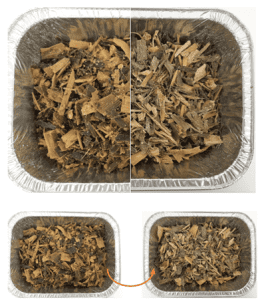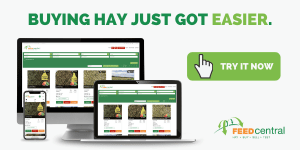BUYERS UPDATE (by Tim Ford)
Trade was brisk up until the middle of last week and then slowed to take a breath as the current weather front unfolds. This is quite typical of the Fodder market, but even as I pen this brief report, enquiries are building again; I expect people will watch the rain come down and then get back into looking after their stock and getting them through a cold, wet winter.
The unseasonal rain through Qld will grow Winter herbage, meanwhile, the channel country is in full flood as water makes it way to Lake Eyre. So, we can expect a very solid base in the cattle market, which has been the driving factor in the Fodder market for the majority of the year.
Its now time for Hay buyers to get ready for EOFY (June 30). Trucks are busy and are being delayed due to wet weather, COVID, and other disruptions. It’s time to plan ahead…. If you want Hay for EOFY you should buy now, so that there is plenty of time to have it delivered. Feel free to talk to us about account terms that can help you manage your end of financial year payment arrangements.
SELLERS UPDATE (by Jill Parker)
The level of investment that many growers make in order to do Hay properly never ceases to amaze me, including machinery, shedding, access etc. The wet weather is highlighting the benefit of first class shedding, loading machinery and all weather access. We are in the process of upgrading our system to be able to record this key information and to be able to use that information to help sell your product. We are testing the system now and will have it out for the new season.
In the meantime, if you have genuine all weather access and can load products almost regardless of weather, please let us know so that we can put notes on your quality statement and profile for both buyers and our sales team to see. There are times when loads are urgent, but are delayed due to access; so, if you have the access to keep trucks moving and the product to keep customers happy, we may jump on the opportunity.
Sellers are encouraged to review their listings. Lower grade Hay is selling as roughage (straw) and needs to be heavily discounted to at least straw values. Higher quality Hays are selling, go online and research selling prices. Remember our system gives buyers delivered prices, so if your bale weights are low, your per ton freight will be expensive; therefore, your ex-farm price will need to be lower.
To learn more about this, go online, play and learn our system, and pretend you are a buyer; if you are comfortable with computers (or mobile) you should create an additional delivery location (under your profile, my location) and check your delivered price vs other hay. Investing 10-20 minutes of time will allow you to learn more and optimise your pricing to help sell your hay. Of course, you are also welcome to talk to us for pricing advice.
TEST UPDATE (by Kimberley Detmers)
Our Queensland Feed Testing Laboratory has seen an influx of silage samples coming in. Many of these are destined to be incorporated into Winter rations with the aid of Farm Nutritionists.
If you want to automatically share your feed testing data with your chosen Nutritionist, give us a call to set that up on your Feed Central profile. This functionality enables your nutritionist to receive your Feed Test results as soon as they are available via your Feed Central profile, as well as via PDF email attachment; in the same way, you receive your feed test results.
You can see below how this is set up below for Nutritionists to see on their profile.
|
Maize silage remains the predominant sample type, coming in from all over the country, including the Gippsland, New England, Adelaide and Scenic Rim regions.On these samples, producers are testing for a Full Oven Dry Matter, in conjunction with an NIR nutritional analysis. The photo below shows a Maize Silage sample that was submitted fresh and dried down to conduct the Full Oven Dry Matter testing component. |

